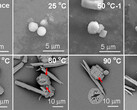The combination of artificial intelligence and 6G networks may soon enable immersive experiences in daily life and significant advances in connectivity and computing power, say experts. Improvements in data latency, security and reliability are expected to revolutionise life in a hyperconnected world, alongside a capable smart network that manages its own capacity. Furthermore, new sensory experiences will evolve from linking digital and physical environments.
In the past, we talked about internet of things, but with 6G, we talk about intelligent or smart internet of things.
- Qin Fei, president of the Communications Research Institute at Vivo
New areas of application include virtual reality, augmented reality, holographic and multisensory communication, collaborative robots and autonomous driving. The International Telecommunication Union (ITU), a UN agency for telecommunications, has predicted that the latest generation of self-learning networks will be in place by 2030.
6G will provide super communication and ubiquitous information, and converge computing services, thus being the base for an interconnected and converged physical and digital world. When we are designing the 6G network, we're going to use AI technology in designing the air interface and also in managing the 6G network.
- Qin Fei
Prototypes for various application areas
Estimates suggest that 6G may be 10 to 100 times faster than 5G. Unlike 5G, which is solely a communication technology that has not yet been fully constructed, Vivo has been working on prototypes of 6G wireless technologies since 2020. One of these prototypes can gather biometric data from users while they sleep to monitor their health.
This data could be utilized to notify a hospital if any abnormal breathing behavior is detected. Virtual reality (VR) glasses could be greatly enhanced as they currently have limited computing power. However, connecting them to the cloud as an edge device could improve their performance. The same applies to autonomous driving, as 6G provides computers and networks to gather all sorts of data about the environment and road conditions.
Challenges to overcome
Rolling out the new network presents several challenges, including the need to augment network capacity and identify the appropriate telecommunications spectrum. Rather than erecting numerous cell phone towers, signals will frequently be transmitted via satellites. Mitigating energy consumption and carbon emissions is also pivotal for 6G's sustainability amidst climate change. A GSMA report suggests that implementing energy-efficient lithium-ion batteries could optimise the technology's efficacy.
Source(s)
MIT Technology Review | Tagesschau | Symbolic image: Bing AI

























